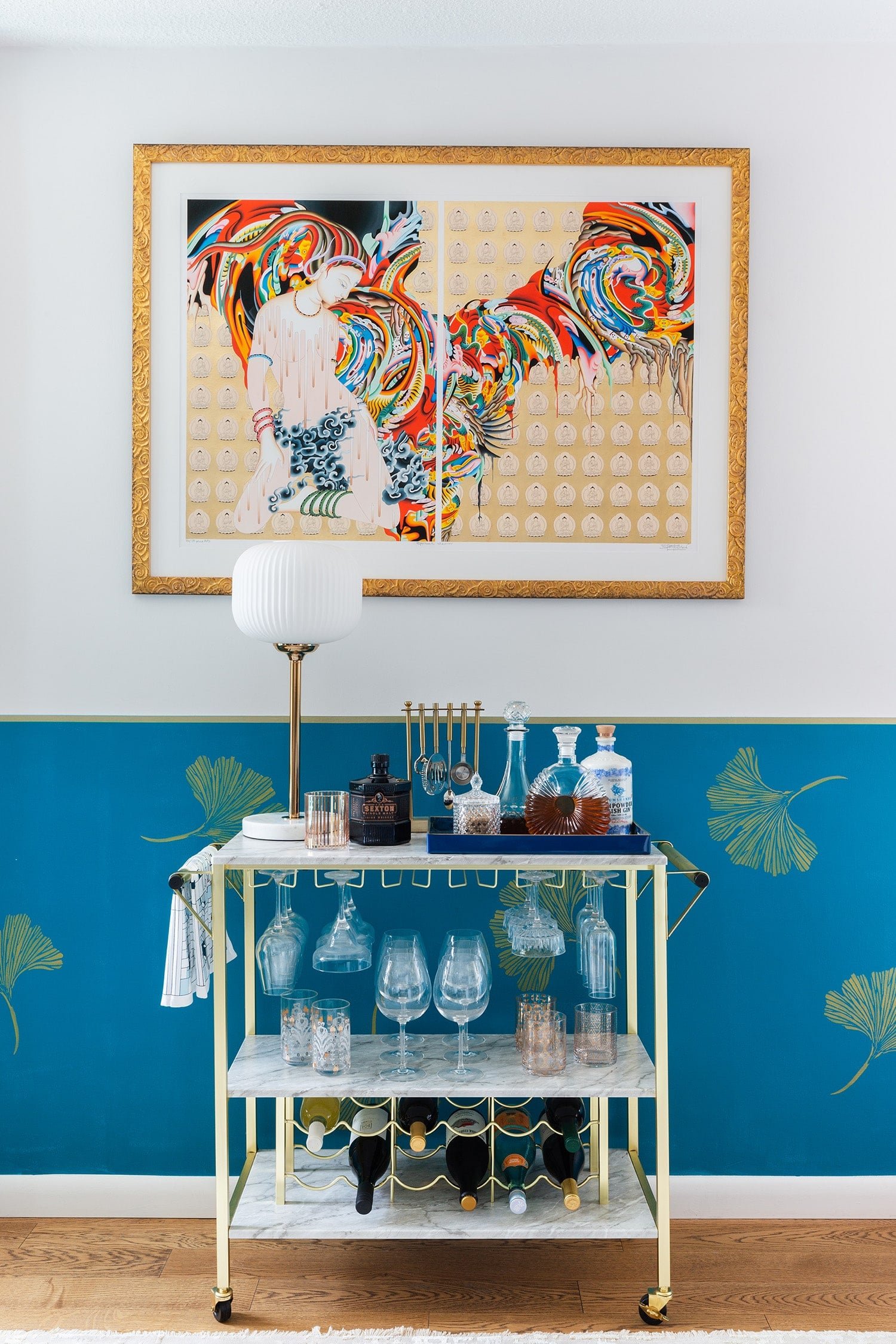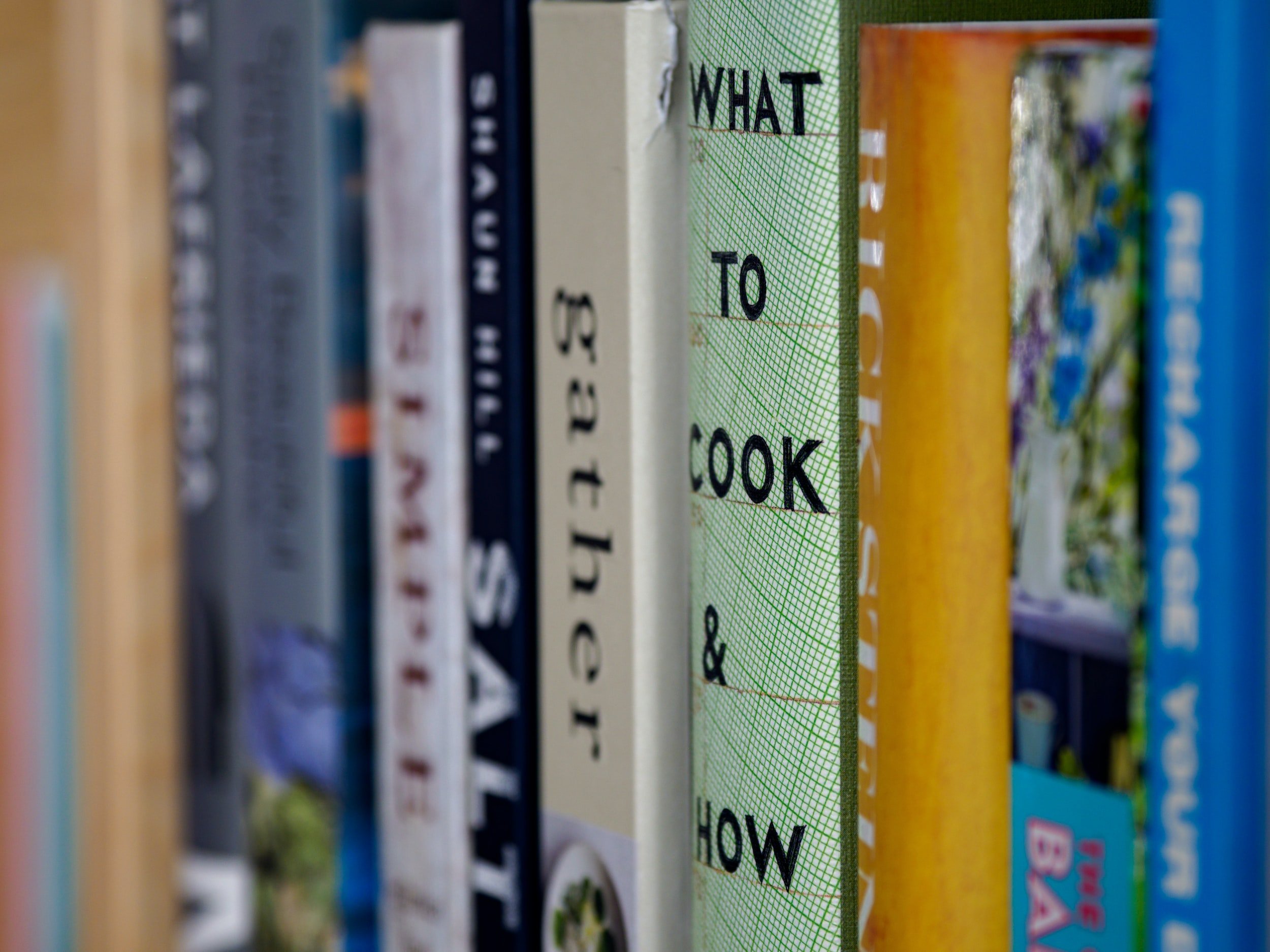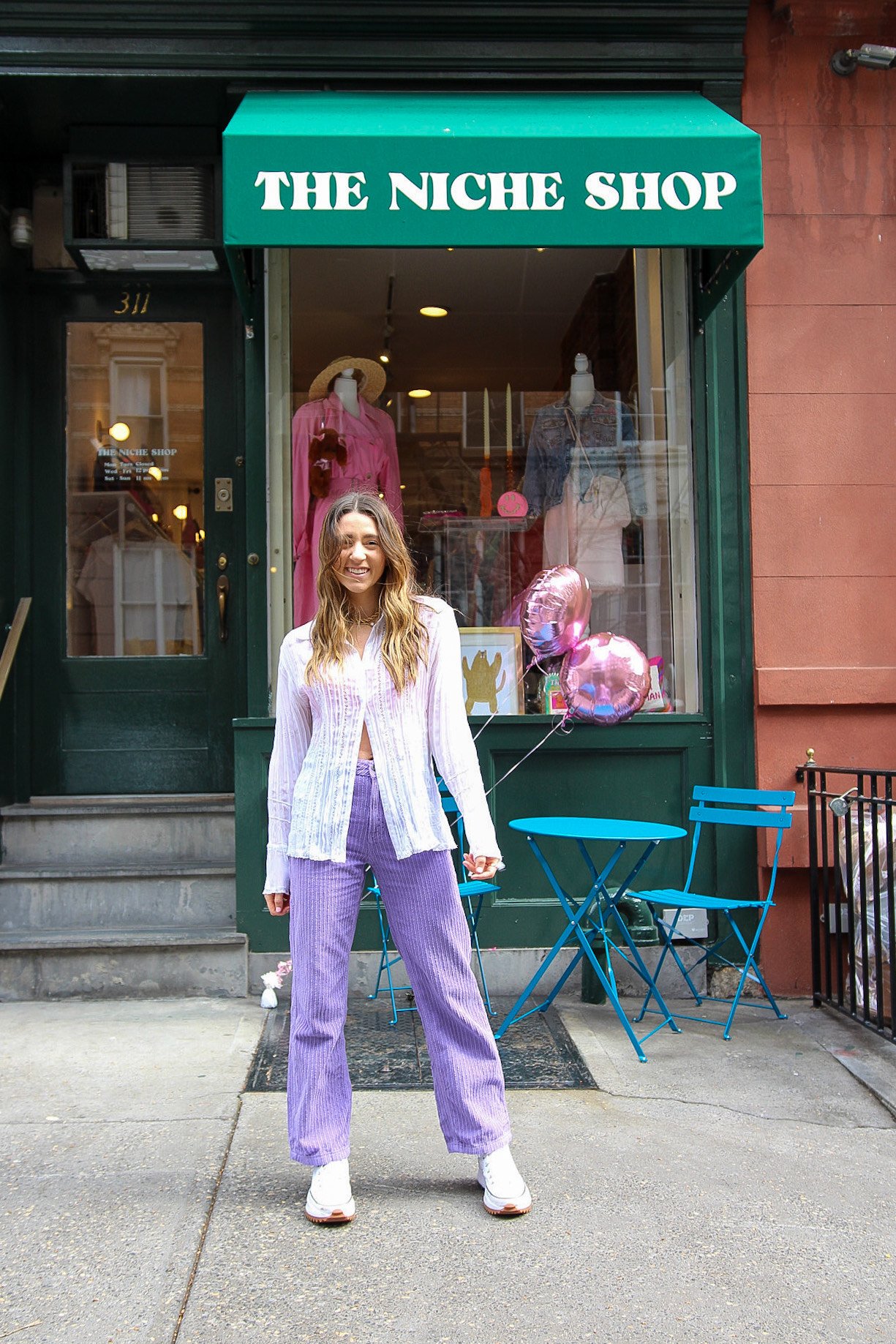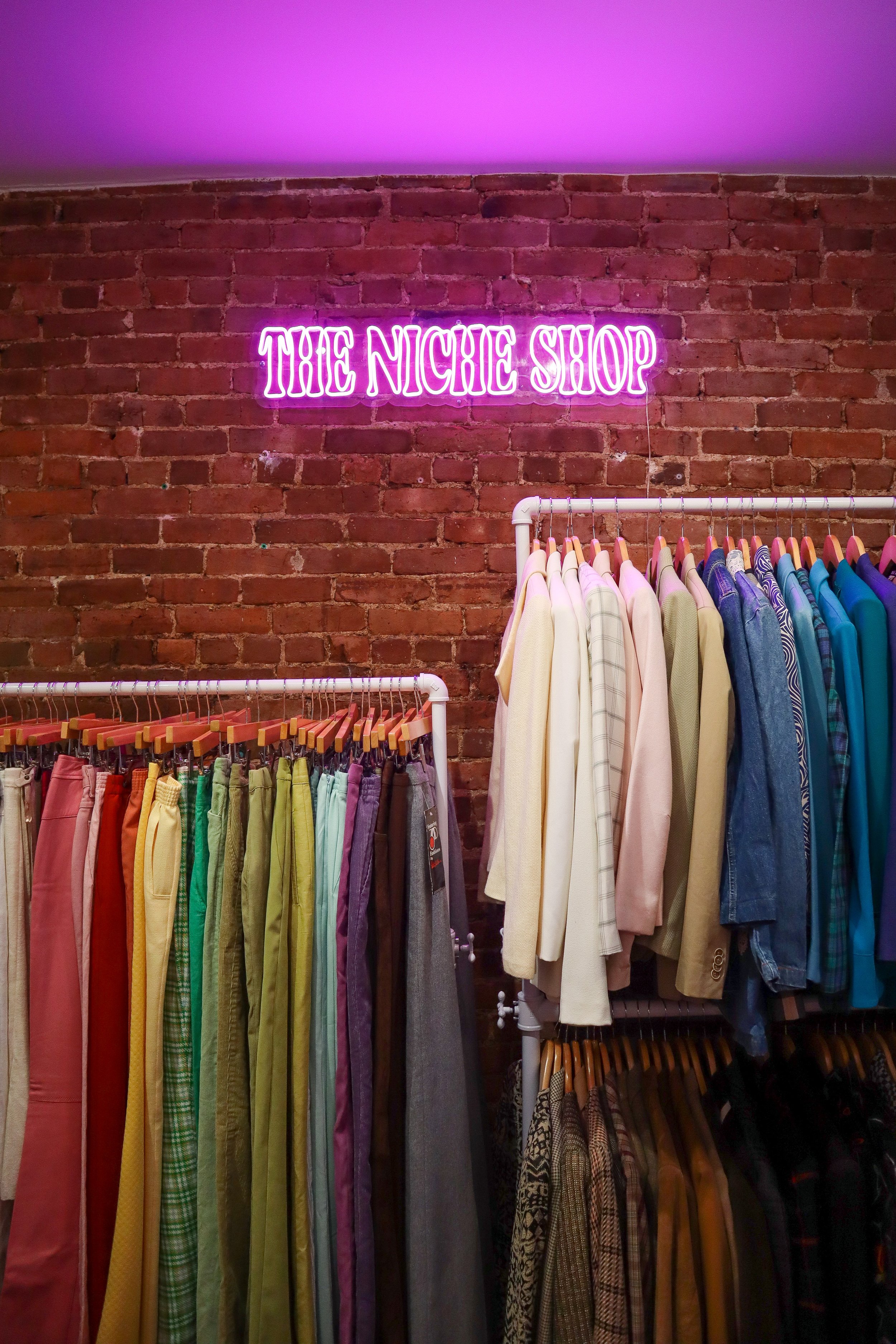An Interview with Madelaine Mayer, of AD:ROIT
An interview with Upper East Sider, Madelaine Mayer.
Madelaine Mayer is an Upper East Sider. But she has a lot more letters behind her name, including RA, NCIDQ, LEED AP, WELL AP. Additionally, Madelaine is the founder and design principal at AD:ROIT. I was lucky enough to recently use her services and can honestly say that it was mind blowing. I love architecture and design, but there are so many quirks (and irritations) about my apartment that I felt had no solution. Enter, AD:ROIT. The best part is that her solutions are not only easy to execute, but affordable. Here, an interview with Madelaine Mayer.
How did you get started in home design?
I worked in the commercial and institutional design sector for many years, and while it was rewarding, I missed the personal connection that gets lost on large projects. It inspired me to start my own studio, AD:ROIT, to focus on small space and home design.
Tell me a bit about how your process works.
Every project begins with a discovery call. I like to think of it as a first design date, where my clients and I get to know one another and see if we would be a good fit. I am a big believer that great design comes from collaboration, so both parties need to be excited to work together.
When we move forward with a project, the first step is a Design Kickoff Meeting, where I ask A LOT of questions. My goal is to get to know my clients; what they like, how they want to live, and how they want to feel. Once I know them as people, I can design their home to match and reflect their unique selves. We also go through a series of visualization exercises for each room in the project, to ascertain in detail exactly what the client is dreaming of.
Once I understand what they want and need for their home, I hit the metaphoric drawing board. (I did actually learn to draft on a real one!). I put together what I call a Schematic Blueprint: mood board of inspiration images, floorplan options with a purchasable example of each piece of furniture, and basic 3D renderings. This gives a good sense of how the space will feel and is a good early check on the budget. We review the presentation together, discuss the options, and finish with a comprehensive plan to move forward.
After approval of the Schematic Blueprint, we move into Detailed Design where I source 3-5 options for each item that needs to be purchased to match the client’s style, needs, and budget. I am very clear with my clients that it is THEIR home, so unless I am explicitly directed otherwise, the final selections are theirs to make.
From here I take care of all purchasing, delivery, and coordination. I have a team of amazing installers who join me to do things like hang curtains and shelves, paint, install wallpaper and tile, etc. If it’s a larger job, I bring in a partner contractor who specializes in New York City apartments (and working with co-op boards). All that’s left to do is for my clients to sit back and enjoy their new homes!
What makes a good interior designer?
There are two really important qualities that go hand in hand. First, a good designer is a great listener. You can’t deliver what you can’t hear. The second is knowing that it’s not your space. I don’t go into any projects thinking “what would I do if I lived here?” It’s irrelevant because I don’t live there. My job is to listen to what my clients really want and deliver that x 100. So if someone tells me they want a purple bedroom, even if I wouldn’t do that for myself, I’m going to deliver the most beautiful purple bedroom possible.
What sets your business apart from others?
Quite a few things! The most obvious is that I am both a Registered Architect and a Certified Interior Designer. It’s hard to find numbers, but experientially there are very few double-licensed professionals practicing today, particularly in the residential sector. My motto is “everything from studs to silverware,” and the great advantage for my clients is that I am a single source for all their home needs. Oftentimes people will hire an architect for the fixed elements in a project (walls, floors, ceilings, doors, etc), then hire a contractor to execute that work, and then hire an interior designer for the flexible and soft elements (furniture, lighting, window treatments, etc). In this model there is a really good chance the architect and interior designer will have different, and potentially conflicting ideas, which results in a less-than-ideal outcome for the client. It also tends to have a longer timeline. AD:ROIT bypasses this altogether by holistically designing a space and having partner contractors to execute it.
Another difference between AD:ROIT and other design firms is that I don’t insist on changing every element in a room, or have a design minimum. I believe every step someone takes in the right direction is a step in the right direction, and I am happy to be a part of that. AD:ROIT offers packages starting at in-depth consultations for people looking for some advice to execute themselves all the way through gut renovations, so there’s really something for everyone.
Lastly, as someone who has spent nearly her entire adult life in NYC, I really understand the challenges that come with renting small spaces. A lot of designers only work with people who own their homes, but I think a security deposit is just another parameter that defines the right design solution for the project. I love working with renters and showing them just how much is possible.
You recently moved to the Upper East Side. How did the move dictate your design inspiration?
One of the things I love most about the Upper East Side is how green and spacious it is. Central Park, the East River Promenade, or the tree-lined sidewalks of Park Avenue; there’s a graciousness to this neighborhood which I really value and try to cultivate in my designs. The city can sometimes feel overwhelming, so it’s important to me to create homes that allow people to decompress and relax. This neighborhood also embraces beauty and elegance arguably better than any other in the city. I find inspiration everywhere I turn, from the obvious sources on Museum Mile and Madison Avenue to the conversations I have with neighbors while walking my dog through Carl Schurz Park.
Is there a style that’s unique to the Upper East Side?
I don’t know if I would call it a style per se, but I think the Upper East Side is secretly one of the most stylistically diverse and eclectic neighborhoods in the city. Architecturally, the neighborhood runs the full spectrum from very traditional to ultra modern, and everywhere in between. There are also some of the most luxurious properties in the city, some of the most economical, and again, everything in between. I think that diversity creates a freedom to experiment, which I absolutely love. Having modern and traditional, decorative and austere, sleek and ornamental, in such close proximity to one another gives people the confidence to play with those polarities in their own homes. An Italian leather sofa on a vintage Persian rug, boldly modern artwork hung below pre-war crown moldings, an antique chandelier above a sleek dining table; these seemingly opposite pairings create rich layered interiors that are a joy to live in and feel quintessentially Upper East Side.
NYC isn’t known for spacious spaces. What advice would you give for those with small living quarters?
Two words: scale and functionality. Let’s tackle scale first. The majority of readily available furniture is made for more spacious quarters than NYC, so you have to make smart choices that scale to your space. For example, unless your living room is enormous, let’s ban rolled or wide track arm sofas. Can they be beautiful? Sure! Do you have an extra foot of width in your living room to dedicate just to aesthetics? Probably not. Instead, look for thin straight or curved arm sofas that will take up less physical and visual space. The same goes for the overall width and depth of your sofa (and we’re just using the sofa as an example; these principles apply to just about every piece of furniture). Can ultra-deep sofas be really comfortable, especially for a weekend nap in front of the TV? You bet, but are they necessary when every inch contributes to the overall graciousness of your space? Nope! Every inch you can save without sacrificing functionality is an inch you gain back to make your home feel larger and more relaxing.
Now to functionality: Whenever possible, items in a small space should do more than one job. Want to put your feet up while watching TV on your narrow-arm not-too-deep sofa? Instead of getting a sofa with a chaise, get an ottoman that can move around your space. Better still, get an ottoman that can be a coffee table if you put a tray on it. Better than that, get an ottoman that has storage for the blanket you’re going to want when you take that weekend nap. The more jobs you can accomplish with a single piece of furniture means fewer pieces and more space, which in turn translates into a more gracious environment.
On that same note, do you work with renters? Any specific pieces of advice for those who rent and want to source up their space?
I love working with renters! Here’s a secret for your readers - I rent and have always rented, so I completely understand the struggle of wanting a beautiful and personal space without losing a security deposit. One of the best developments over the last few years for renters is the transformation of the peel and stick industry. Even 10 years ago we were still calling it contact paper and using it primarily to line drawers, but now the possibilities are literally endless. I use it as wallpaper throughout a room, a feature wall, large scale murals, tiles in a kitchen or bathroom, cabinet fronts, behind bookcases, on countertops…the list goes on and on! It is absolutely the easiest and most rental friendly way to completely transform a space.
What are the biggest challenges when working with clients?
The dreaded logistics of schedule and budget. Especially in the last two years with supply chain issues and fluctuating material costs, it’s gotten much more difficult to smoothly plan a project without hiccups. However, I’ve found that clear and consistent communication from the beginning goes a long way to maintain great relationships and ensure a terrific outcome.
Tell me about one of your favorite projects.
I worked in the design industry for many years before starting AD:ROIT. One of my first solo projects remains an all-time favorite, and it was right here on the Upper East Side. The Mid-Century Modern Studio had a lot of ambition for a very small (and rented!) space. The client wanted a mature space with a defined bedroom, living room large enough to regularly seat 5-6 people, dining table for 4, and a dedicated stretching/exercise area…in 225 square feet! I am really proud of the design solution that accomplished all of this, but even prouder of how much the client loved his new home. He has since moved downtown to a one bedroom, but told me that literally everything we selected for his studio worked in the new apartment - even the radiator covers! It was a testament to how well we nailed his style that the pieces could transcend the space for which they were originally selected. And I say we, because I genuinely believe that every good project is a collaboration between client and designer. It’s my job to ask the right questions and deeply listen to my clients’ answers in order to deliver this type of space and experience.
You totally blew my mind by offering a solution to my windows that I never considered. How are you able to take a look in someone’s home and make suggestions they may have never thought about?
I’m so happy to hear that!! I think it comes down to experience and exposure within a zone of genius. I am immersed in design all day, every day. I am constantly looking at images, reading articles, and researching products. Designers are trained to look at a space, evaluate the strengths, weaknesses, and opportunities, and then mentally scroll through our database for the appropriate solution. You do it long enough and the process gets close to instantaneous. Just like an experienced doctor can examine you, figure out what’s wrong, and suggest the appropriate treatment, an experienced designer can do the same thing for your home.
Rapid Quick Answers:
Signature style? A contemporary interpretation of art deco motifs embracing plenty of color, pattern—and most importantly—joy.
Favorite piece of furniture? I grew up with my great-grandmother’s antique art deco vanity in my bedroom. I think it instilled in me a love for that period, and that a lady should always have a vanity (and even in NYC I’ve always had one).
Best budget website/item? For NYC, the Ikea Norden gateleg table. It’s a transforming and space-saving superstar. Pro Tip: buy two sets of casters and put it on wheels to make moving it around a breeze.
Favorite home trend? Moving away from all gray everything and embracing color. NYC is gray enough; add some jewel tones to your life. I promise you’ll be happier.
Least favorite home trend? Oh gosh, there are so many to choose from! While open concept bathrooms and TV’s over fireplaces definitely top the list, they aren’t super applicable to NYC. For the city, I’d say it’s a toss up between motivational word art (Live, Laugh, and throw it in the trash please!!) and homes where everything comes from the same store and it looks like it came straight out of a catalog. More than anything else, your home should represent and enhance YOU.
Best room to invest money? Wherever you spend the most amount of time. Again, not as applicable to NYC, but people will spend tons of money on formal dining and living rooms and NEVER use them. What a waste. If you’re going to spend the money you should enjoy the investment.
UES Gem: Kitchen Arts and Letters
A bookstore for foodies on the Upper East Side.
Have you been to the wonderful Kitchen Arts and Letters? Located at 1435 E. Lexington, between 93rd and 94th Street, it’s a business that marries a local bookstore with food and drink. Basically, a dream come true.
Kitchen Arts and Letters opened in 1983, and has since been serving the neighborhood (and city) with books that cover a broad range of food history and science to recipes to award-winning food writing. You can also find limited editions and signed copies here. Of course, Julia Child and James Beard were among their early customers.
I love popping into this shop when I want to buy a unique gift. I’ve bought New York City cookbooks for friends who moved away; I’ve purchased a meat-curing cookbook for my brother-in-law; and I’ve bought a handful of books for family members and friends who love to cook—and eat. Plus, they’ll wrap it in a pretty package for you!
A Great Designer Consignment Shop on the Upper East Side
After scouring consignment shops on the UES, this one is my favorite.
I’ve been trying to shop in a more sustainable way these days, and found the Upper East Side to have great consignment shopping. Last weekend, I went on a fun mission to visit as many as possible in the neighborhood and my favorite was Michael’s, located at 1125 Madison Ave. on the corner of 84th Street.
Michael’s Luxury Consignment Shop has been family owned through three generations since 1954 and they really work hard to curate a nice selection of designer clothing, shoes, handbags, and jewelry. Unlike some of the designer consignment shops I visited, Michael’s is well organized and laid out nicely. It feels like you’re shopping in a boutique, rather than digging through racks of items.
The shop often hold sales, especially at the end of each season and it’s not uncommon to find, say, a designer dress for less than $50. You can also find reasonable prices on shoes too. What’s your favorite consignment shop in the neighborhood?
For a Special Occasion: Marky’s Caviar
This caviar shop on Madison Ave is a lovely place to celebrate a special occasion.
If you’re looking to celebrate a special occasion or just splash out on the Upper East Side, there’s Marky’s Caviar. Located on Madison Avenue and 81st Street, Marky’s is both a retail space and a restaurant. The pretty front counter is filled with various styles of caviar where you can buy all sorts of tins, from an Alaskan trout roe for $25 to Beluga for $850. There’s even a vegetarian “caviar.” You can also purchase accoutrements like blinis, creme fraiche, hard-cooked egg, etc, along with other gourmet speciality items. The back of the shop is devoted Huso’s, serving caviar-accented lunch and dinner. I once went with a dear friend who was visiting me from New Orleans and we sat by the front window (great for people watching on Madison) and drank a bottle of Champagne and split a sampling of caviar and accessories. For something a lot less expensive but still fun and special, we’l often buy a tin of the smoked trout roe for $35 and have an at-home celebration.
Spotlight On: Le Grand Triage Wine Shop
My Favorite Wine Shop on the Upper East Side.
There are so many great wine shops on the Upper East Side, but my all-time favorite is Le Grand Triage, located on First Avenue, between 86th & 87th. What I love most about this place is that the selection is really unique and the staff is so approachable and helpful. I often go in with an idea of what I might like to buy and then go with whatever recommendation I’m given. To me, this place feels more like a boutique experience than, say, one of the bigger box stores. You can stop by in the evenings Thursday through Saturday nights for a free tasting. We’ve also been a member of the shop’s wine club for a year-plus, which is so fun. Basically, you pay a $50 monthly fee and receive two wines each month (classic or fun/geeky wines—your choice). The bottles are selected by the sommelier and aren’t available in the store, so you can try some unique wines. Plus, they’re delivered to your home on the Upper East Side.
The Niche Shop: Vintage Secondhand Clothing & Home Decor NYC
The Niche Shop
Image Credit: The Niche Shop
The Niche Shop: A vintage secondhand clothing and home decor store has opened on east 81st street, between 1st and 2nd avenue. The small space is filled with colorful and carefully curated items by owner NYCNichole: a content creator and former social media manager who has a passion for thrifting and secondhand fashion. Nichole opened The Niche Shop to reflect her personal style, which she describes as feminine with edge, glam-ma (glamorous grandma) maximalist chic. I purchased a pair of 1990s black boyfriend Levi’s that fit perfectly and cost a reasonable $30. I’ll certainly be back for the home decor.
Image Credit: The Niche Shop





















